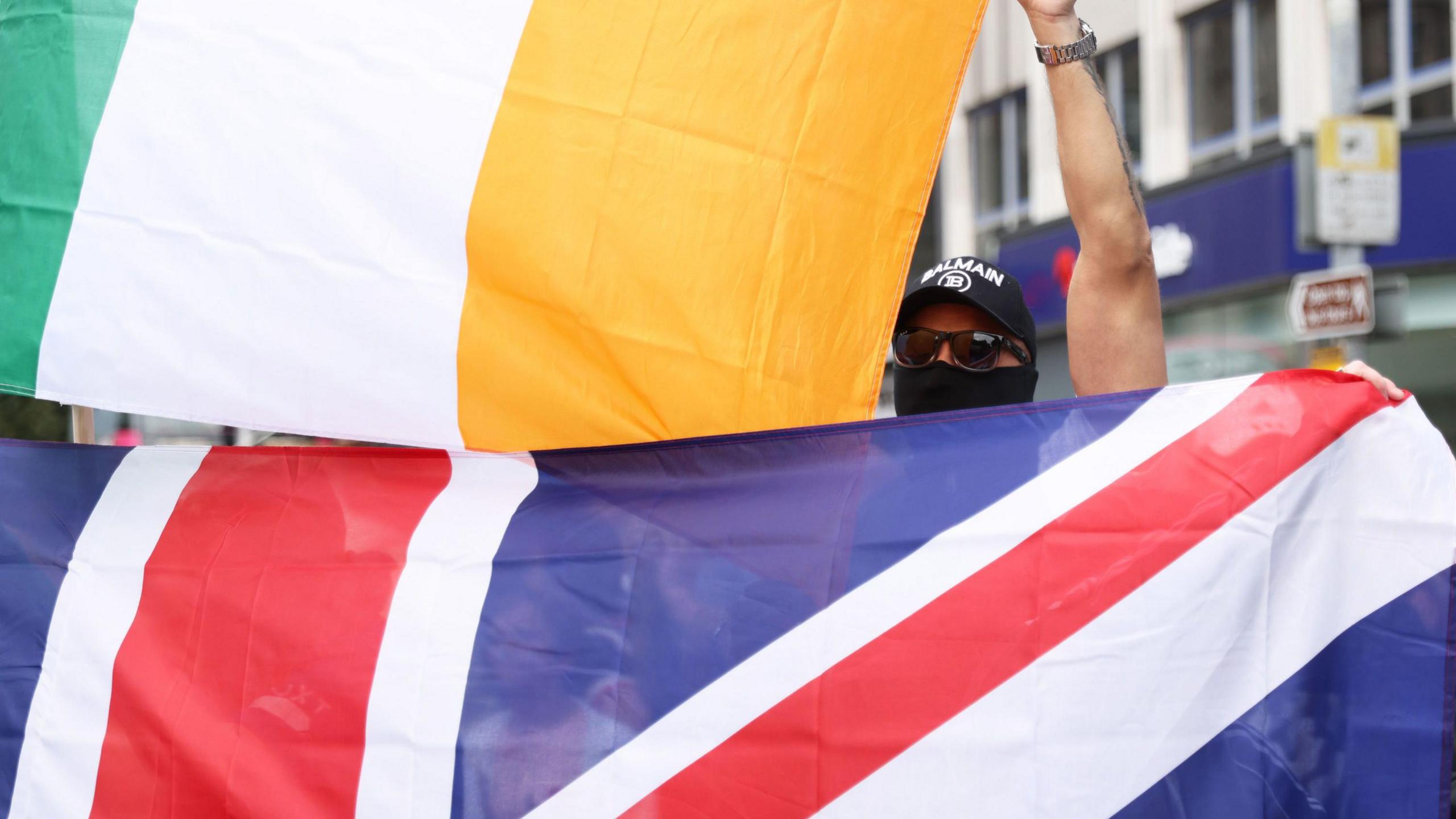Who is behind the Belfast race violence?
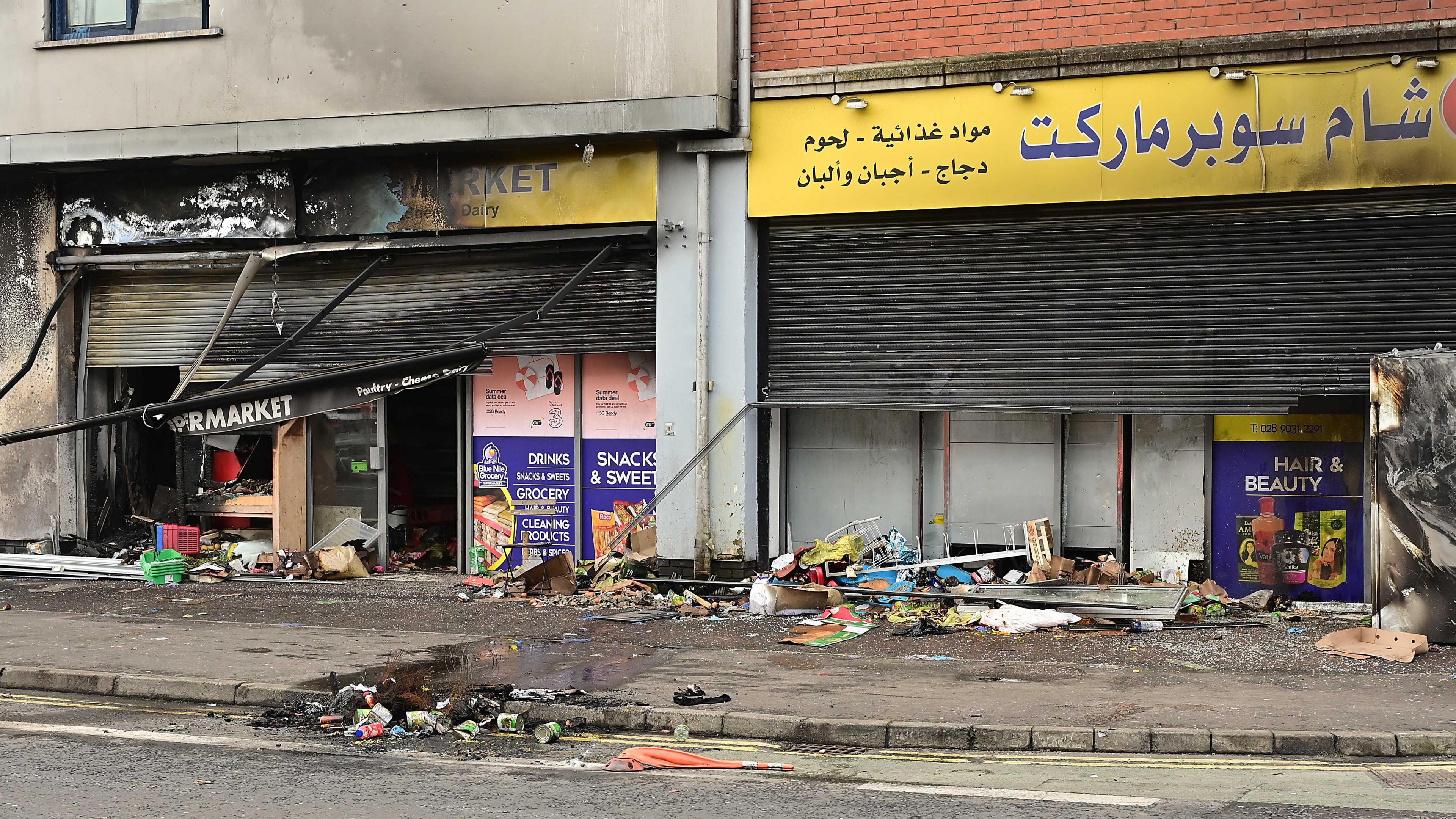
Some businesses belonging to ethnic minorities in Belfast have been damaged
- Published
Toxic algorithms, far-right alliances across sectarian divides and old-fashioned race hate with an “element” of paramilitarism.
These are just some of the issues that converged in a week that saw racist violence hit the streets of Belfast.
Muslim businesses were burnt down, a man’s head was stamped on, and houses were targeted in racially-motivated attacks.
BBC News NI has asked the question: Who is behind it all?
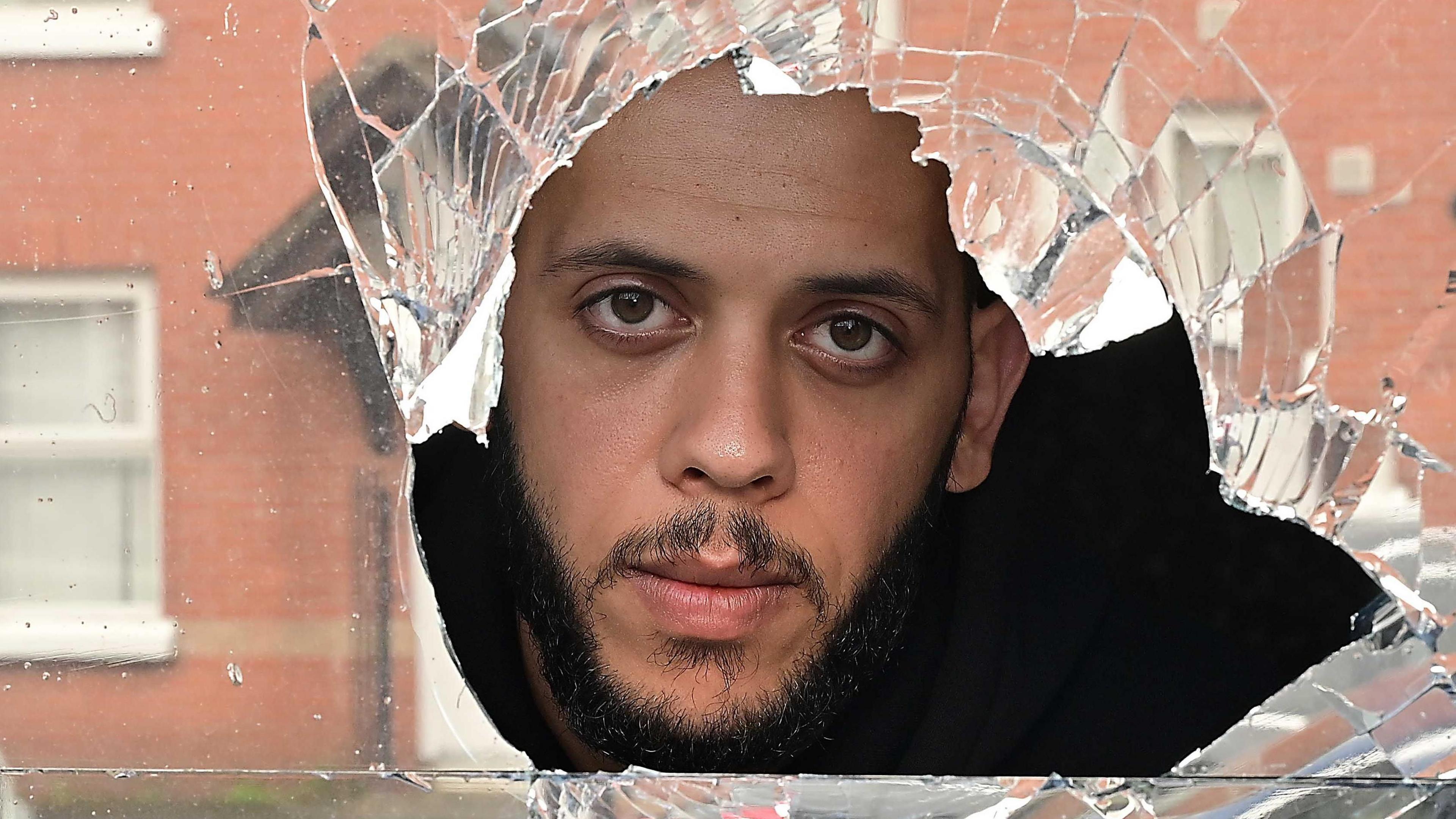
Muhammed Soufi Baddour's windows were smashed in one of several racist attacks
It is a difficult question to answer because the reality is: No one truly knows.
But a good place to start is to ask how did we get here?
It was the murder of three children in Southport that led to riots in towns and cities across England.
This triggered the anti-immigration protest at Belfast City Hall last Saturday, which descended into a day and night of violence, before further disorder followed.
But in reality, race hate has been rising in Northern Ireland over recent months and years.
“What we’ve seen is an escalation but in reality a continuum of a long-term issue of racist intimidation and racist violence, largely driven by elements of loyalist paramilitarism,” said Daniel Holder, director of the Committee on the Administration of Justice.
“And one of the issues is, because there has been a high level of impunity for that activity, that has potentially emboldened those to go on and do this even more out in the open, and that’s what we’ve seen this week.”
The PSNI said it was in no doubt that a paramilitary “element” was involved in the disorder. But loyalist sources insist none of it has been orchestrated at organisational level.
“I mean, loyalism is not a monolith there are those who do wish to move on,” said Daniel Holder.
“We really need armed groups to go away completely but there are certainly elements of loyalist paramilitary groups engaged in racist violence and intimidation.”
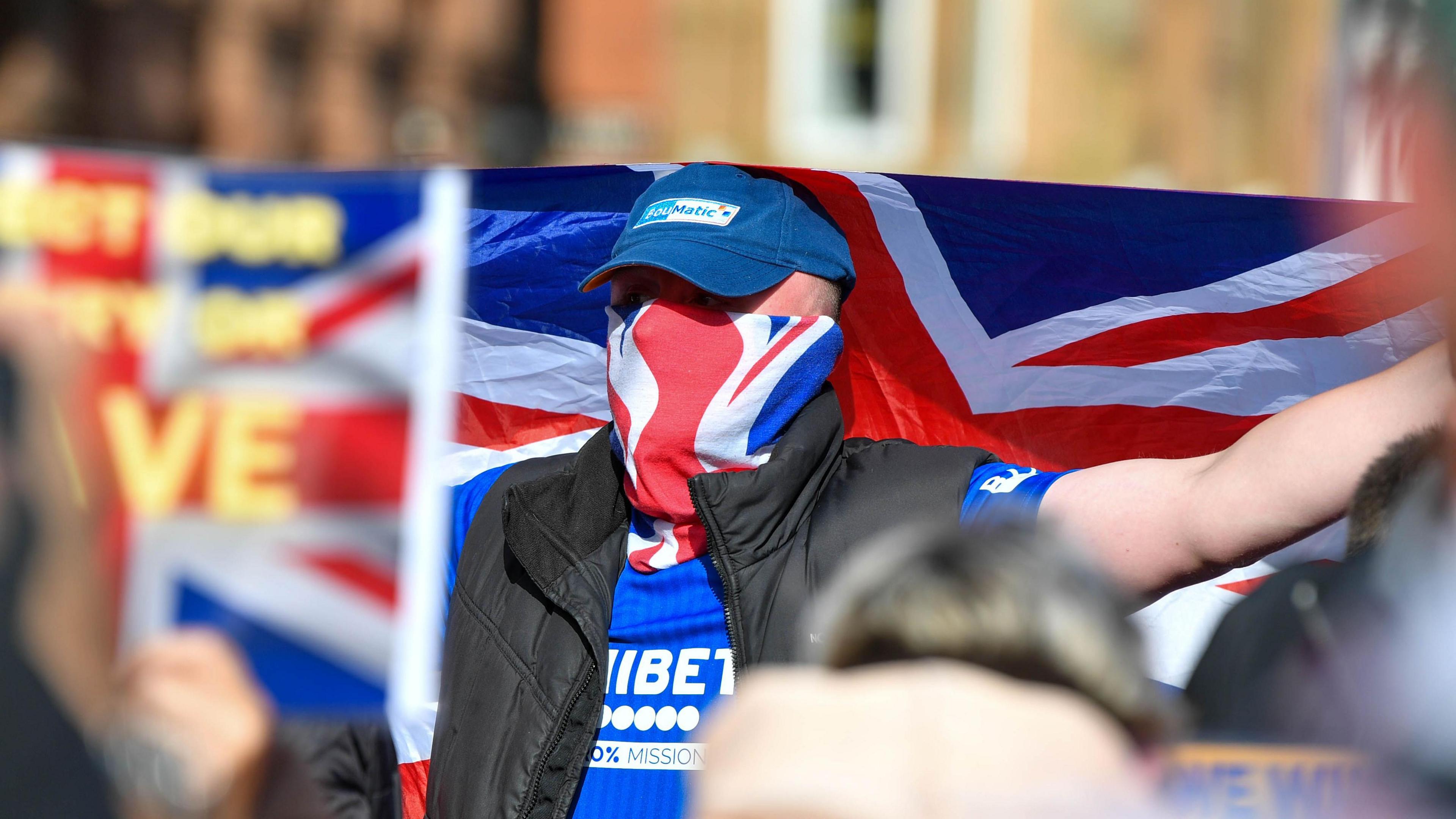
A demonstration was held in Belfast city centre on Friday evening
Whether the leadership of those groups have moved to discourage those engaging in violence remains to be seen.
One loyalist source likened the recent flare-up of trouble in south Belfast to “a bag of marbles, it's hard to know what will happen next".
There is an argument that those engaged in disorder are frustrated by a lack of social housing, but at the same time, there’s been an element of recreational rioting at play.
The claim that young people have been spurred onto the streets by older people with links to paramilitaries is something the police are investigating.
But it is also argued that those rioting have been fuelled by disinformation fed online through social media pages and groups managed by anonymous actors.
One man was arrested on suspicion of publishing written material intended to stir up hatred.
Posts on one such page included encouragement to attend planned anti-immigration protests – but those behind the page insist they are not the organisers of the events.
One post stated the protests "should remain peaceful/respectful at all times".
On the other hand, other posts appear to try to whip up anger and resentment towards ethnic minorities.
The page also posted about an unlikely cross-border alliance that emerged at last Saturday’s protest and that saw union flags and tricolours carried side-by-side.
Social media impact
Protesters carrying a “Coolock Says No” banner marched through the streets.
It is believed those carrying it were associated with the movement in Dublin which is opposed to asylum seekers moving into a site in the north of the city.
One of the men, who travelled from Dublin with the group, posted a video on social media, which appears to have since been deleted, saying “history [was] being made” with loyalist and nationalists marching together.
In another, he said: “When you be seeing tricolours and union jacks marching side-by-side with a common goal, walking together as opposed to tearing lumps out of each other?”
Mark Malone, from the civil society organisation Hope for Courage Collective, suggested that, in some cases, this solidarity might be an example of alliances being formed by the far-right.
“There have always been attempts by very small numbers of people to try to make alliances across traditional sectarian divides, on the basis of white supremacy,” he said.
“However, in the context of the north itself, those alliances have never really lasted or gone anywhere.”
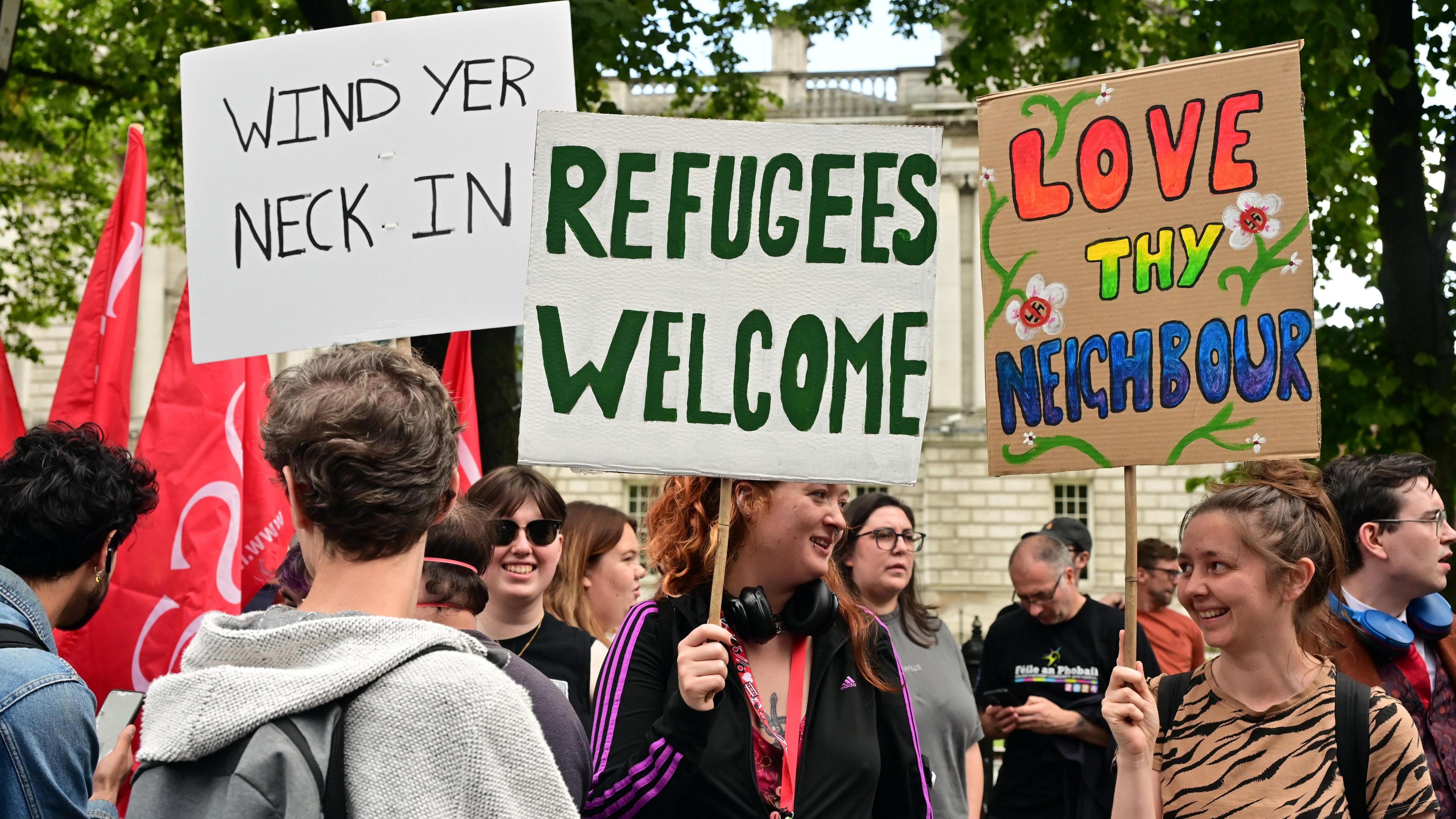
Anti-racism campaigners held a counter-protest in Belfast on Friday
He said when talking about relatively small numbers of protesters, the effects online can still be large.
“Part of the issue is the sort of amplification of even small numbers on social media that can give the appearance of broad swell of support rather than an actual reflection of the particular numbers of the people who are involved in the act of organising itself,” he said.
When it comes to the spreading of misinformation, social media platforms do have incentives in place to try and crack down, but obviously this is a big job.
While liking a page or following a particular account on social media is the user’s choice, there are concerns that extreme content is being “pushed” on people by the companies behind the platforms – by something called “toxic algorithms”.
These determine what social media users see in their feeds, based on things like their age, gender and search history.
Johnny Ryan, from the Irish Council for Civil Liberties, said he is really worried about the issue.
“If, for example, you’re concerned about or maybe if you’re only curious about the opening of a centre near you to house refugees, that is the kind of signal that these completely wild recommender systems may pick up on and start pushing content about young males of fighting age and all of that kind of stuff,” he said.
He added that while there have always been niches of people with extreme views, they have tended to remain in that niche.
“But this system is finding that type of stuff and it is artificially amplifying what otherwise would not be seen by people, and it’s pushing it and recommending it into your feed,” he said.
“We’re seeing this system push the seeds of angst and hate and loathing and despair at people who it has judged are sensitive to receiving it.”
Related topics
- Published8 August 2024

- Published31 July 2024
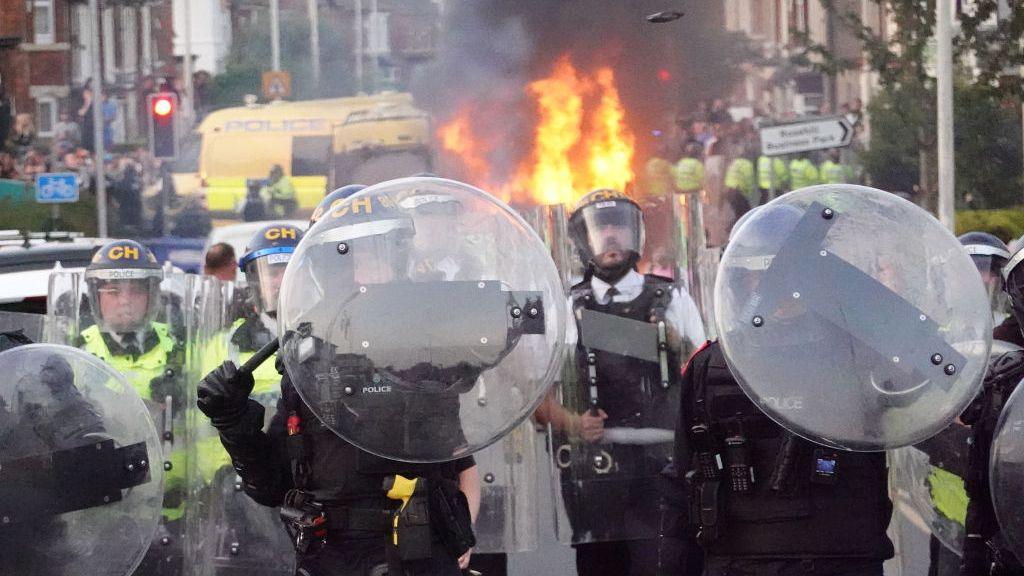
- Published5 August 2024
